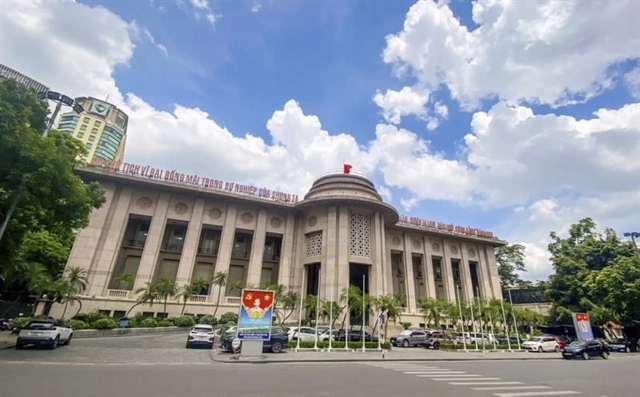 Economy
Economy

 |
| Compared to the beginning of this year, the average lending interest rate has so far decreased by 0.96 per cent, which has helped enterprises reduce input costs and increase investment. Photo cafef.vn |
HÀ NỘI — By December 7, credit growth had accelerated to 12.5 per cent, so the year-end credit growth target of 15 per cent set by the State Bank of Vietnam (SBV) for 2024 is feasible, SBV’s deputy governor Đào Minh Tú said.
According to Tú, compared to the same period in 2023, the rise is quite positive. At this time last year, credit only increased by 9 per cent.
If there had been no Typhoon Yagi, this year's credit growth could have been even higher than this figure, Tú said.
In the period, total outstanding loans were about VNĐ15.3 quadrillion, (US$5.9 billion) while raised capital was about VNĐ14.8 quadrillion, Tú added.
Tú said the growth rate of outstanding loans was higher than that of raised capital because, in addition to capital raised by commercial banks, the SBV also supported more capital for commercial banks through policy management tools.
According to Tú, the credit growth this year was higher than last, because the economy has many more advantages, and many achievements have been reached. Exports have gained higher growth, while enterprises in general have more effective production and business activities, while the overall investment environment has been more favourable.
In addition, the synchronous and harmonious management between fiscal and monetary policies has helped companies to be bold in terms of investments and borrowing, increasing their ability to absorb capital.
Especially noteworthy, Tú said, changes in the SBV’s credit management policy had been shown to be effective. Specifically, the SBV has allowed commercial banks to be completely proactive in determining their credit growth according to the capital needs of the economy and their own capital capacity. Any bank that runs out of the credit growth cap assigned by the SBV at the beginning of the year can proactively increase the cap without having to wait for the SBV's approval, as was the case in previous years.
In addition, the raised capital source this year has also been harmonious, which has helped as lending interest rates have decreased. Compared to the beginning of this year, the average lending interest rate has so far decreased by 0.96 per cent, which has helped enterprises reduce input costs and increase investment.
The SBV has also removed many difficulties in lending procedures and regulations. Notably, it has issued a debt deferral policy for borrowers who were affected by Typhoon Yagi.
Despite controlling credit to real estate and securities sectors, credit to the sectors has still created conditions for them to rebound.
According to Tú, the SBV at the beginning of this year set a credit growth of 15 per cent for the whole year. With the current credit growth rate and the fact that the end of the year is always the time of high disbursement, the annual credit target can be achieved. — VNS




